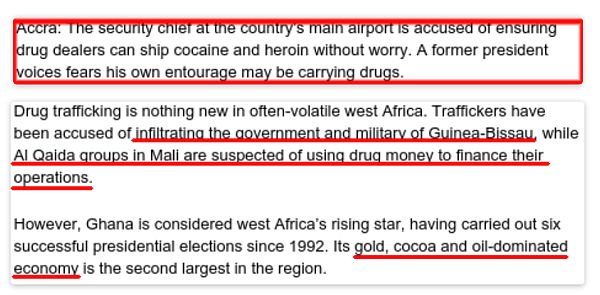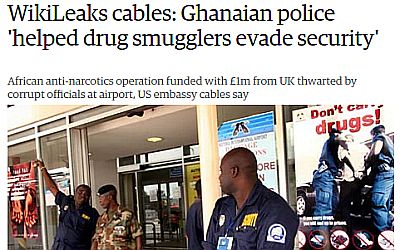Redrawing the Map of the CIA Drug Trade
It’s been four short days since the July 15, 2016 coup d’état (color revolution?) attempt in Turkey, and already, the open-source research community is well underway in digesting what’s just occurred. President Recep Erdogan was quick to place the blame at the feet of his long-time political opponent (and likely CIA asset), a multi-billionaire “refugee” hiding out in the woods of western Pennsylvania – cleric Fethullah Gülen. Gülen, in turn, pointed the finger back at Erdogan, suggesting that the coup was staged for the express intent of centralizing authority.
However, the Erdogan v. Gülen feud isn’t what this article is about; at least not directly. There’s a lot for the curious Reader to sink their teeth into there – from the ever-mysterious Gülen’s activities running the largest chain of Charter Schools in America (funded in part by the Bill and Melinda Gates Foundation and currently under investigation by the FBI for money laundering) to Recep Erdogan’s love affair with NATO intelligence just a few years prior. Inquiring minds will quickly concede that this entire Turkish affair is (and has long been) a proverbial rat’s nest of Intelligencia and regime change.
Wherever the rats are scurrying, one’s likely to find some cheese close by – and the opium flows from Afghanistan bound for the Western world provide plenty of it. Buried among the headlines of the day was a story regarding Turkey’s Incirlik Air Base losing power during the attempted coup. When the lights came back on and the dust settled, Incirlik’s NATO-led “anti-Daesh” operations were given the continued green light, though the base’s Turkish commander remains in custody.
While many have been focused on the concerning amount of American nuclear warheads residing in Incirlik, its position as the drop-shipper of refined Afghan heroin bound for Western markets is equally pertinent. A politically uncertain climate in Turkey (to say the least) coupled with the general chaos of the region calls the future of NATO’s longstanding Incirlik drug-running operation into question – and that’s the finest wheel of Dutch Gouda the CIA’s had its mitts on since Iran-Contra.
Fortunately for the Agency (and correspondingly unfortunate for America’s nonviolent prison population), CIA’s “response” to this Turkish chaos has been anything but reactionary. In fact, their preparedness for such a contingency began in earnest years ago – to such an extent that the entire map of the CIA’s post-9/11 drug trade is being redrawn before our very eyes.
The Gulf of Guinea: The New(ish) and (not so) Improved MENA Drug Route
Readers of Stateless Homesteading will recall that back in November of 2015, we published an article detailing the significant uptick in heroin and cocaine trafficking coming from West Africa – an old route once used by CIA front-men Meyer Lansky and “Lucky” Luciano and their Operation Gladio partners in Lebanon, refined opium would make its way from the Middle East to New York via an airport in Accra, Ghana.
With the explosion of Nicaraguan cocaine stemming from Iran-Contra and the boom in Afghan opium that followed, West Africa’s place in Intelligence-backed drug-running has received far less attention in the modern era; that is, until reports began surfacing in 2013 regarding Accra’s Kotoka Airport once again being used for the smuggling of cocaine and heroin. West Africa, after a decades-long hiatus, finds itself in a position of prominence in the international drug trade – ensnared not by the grip of Operation “Gladio A” and the CIA mob syndicate that supported them, but Operation “Gladio B” and the CIA-backed Salafist boogeymen known as “Al-Qaeda in the Islamic Maghreb” (AQIM):
See Ghana hit by illegal drug trade (image)

via Gulf News
Unsurprisingly, the “refreshed” heroin and coke-smuggling syndicate in Ghana includes at least some amount of sponsorship from officialdom, as the former President of Ghana, John Atta Mills, voiced public concerns that elements of his own administration were involved in the trade. He is now deceased. His predecessor, President John Kufor (2000-2008) shared similar concerns, with cables suggesting “suspicions of widespread corruption, including instances where airport security was suspected of tipping off smugglers.”
In other words, 2013 was not the beginning of the CIA’s West African operations – it was instead the boiling point at which pressure had to be relieved through limited public exposure. With a major scandal from “leaked” US Embassy cables detailing the Ghanaian police’s wholesale cooperation with the drug operation, it was nothing short of a declaration of ownership – a coup d’état in its own right:
As a major port for drugs bound to the UK, US, South America, and Western Europe as a whole, Ghana has been actively redesigned over the past decade as NATO’s “backup” of sorts for Incirlik Air Base, with increasing fervor towards this aim beginning in 2013.
Ghana is hardly an “ideal” terminal for would-be drug-runners, though; geographically, it’s farther out of the way from opium producing regions and farther still from target “consumer” markets than the Turkish operation currently is. And as the “Grand Chessboard” in the MENA region is still in the process of being flipped, NATO control of these producing regions generally seems tenuous. In addition to its geographic inconveniences, one of Africa’s chief “illicit” crops, cannabis, is proving increasingly unprofitable in an age of Western legalization and decriminalization.
But if a lone blogger can put that much together, the CIA is certainly aware of West Africa’s shortcomings. Opium, as the British learned over a Century ago, is the most suitable drug for the aims of population control and Empire. The loss of Afghanistan, currently the world’s largest producer of opium, would seemingly be a critical blow to NATO and its “Third British Empire.”
Of this, too, the CIA is keenly aware, as our story now makes a Transatlantic voyage to the Mexican State of Guerrero. Previously, the impoverished Southern Mexican countryside had only a meager affiliation with heroin production. This has all changed in just a few short years.
From “Fair Trade” Avocados to Drug Trade Poppies
While NAFTA’s Globalized push for Big Ag “fair trade” fruits and vegetables has hardly served to assist the American or Mexican “working man,” its drug trade certainly has; Mexico, by geographic necessity, is a key trafficking route for Central American cocaine headed to America, as Barry Seal, Oliver North, and a slew of Deep State agents learned during Iran-Contra.
Continue reading . . .
Wiki-leaks Cable Image source The Guardian
SF Source Stateless Homesteading July 2016
[widget id=”text 44″]

